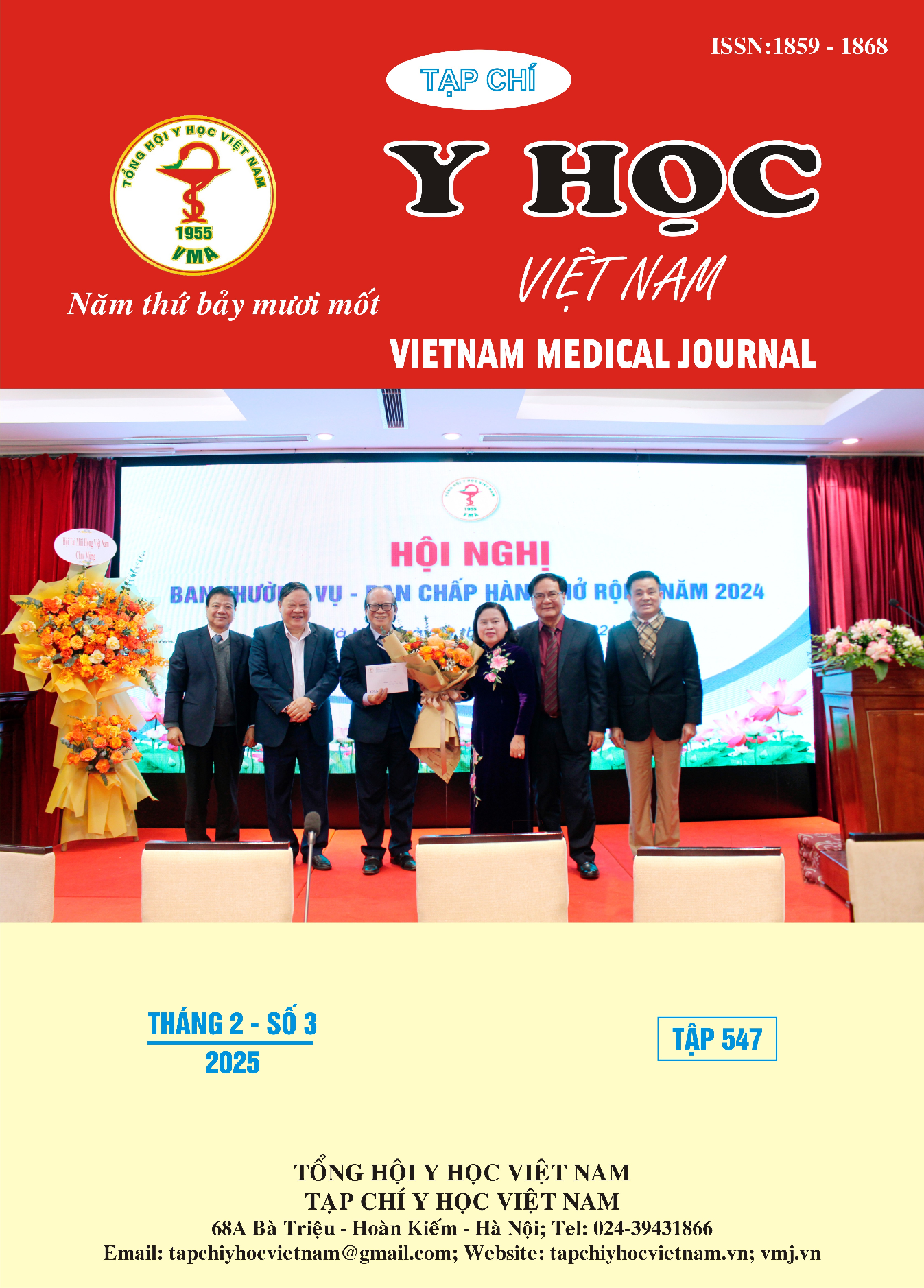STUDY ON THE STATUS AND OUTCOMES OF ORAL ANTICOAGULANT USE IN ACUTE ISCHEMIC STROKE PATIENTS WITH ATRIAL FIBRILLATION AT AN GIANG CARDIOVASCULAR HOSPITAL
Main Article Content
Abstract
Objective: To investigate the status and outcomes of oral anticoagulant (OAC) use in patients with acute ischemic stroke (AIS) and atrial fibrillation (AF). Subjects and Methods: A descriptive cross-sectional study with a 3-month longitudinal follow-up was conducted on 51 AIS patients with AF at An Giang General Hospital from January 2024 to September 2024. Results: The average age was 74 years. The mean time to initiate anticoagulation therapy was 4.3 days post-stroke onset, with 39.2% starting early, 49% late, and 7.8% at an optimal time. The main types of OAC used were vitamin K antagonists (74%), direct oral anticoagulants (22%), and 4% did not receive anticoagulation therapy. After 3 months, 8% experienced recurrent stroke, 2% had intracranial hemorrhage, 2% had gastrointestinal bleeding, and 12% died from all causes. Conclusion: In AIS patients with AF, the initiation of anticoagulation therapy was predominantly delayed, and the rates of recurrence and all-cause mortality remained high.
Article Details
Keywords
oral anticoagulants, stroke, atrial fibrillation
References
2. Hội Tim Mạch học Việt Nam (2022), “Khuyến cáo của Phân hội nhịp tim Việt Nam, Hội Tim Mạch Việt Nam về chẩn đoán và xử trí rung nhĩ”, trang 9.
3. Arboix, A.; García-Eroles, L.; Oliveres, M.; Massons, J.B.; Targa, C. Clinical Predictors of Early Embolic Recurrence in Presumed Cardioembolic Stroke. Cerebrovasc. Dis. 1998, 8, 345–353.
4. England, T.J.; Bath, P.M.; Sare, G.M.; Geeganage, C.; Moulin, T.; O’Neill, D.; et al. Asymptomatic Hemorrhagic Transformation of Infarction and Its Relationship with Functional Outcome and Stroke Subtype. Stroke, 41, 2834–2839.
5. Heidbuchel, H.; Verhamme, P.; Alings, M.; Antz, M.; Diener, H.-C.; Hacke, W.; Oldgren, J.; Sinnaeve, P.; Camm, A.J.; Kirchhof, P.; et al. Updated European Heart Rhythm Association practical guide on the use of non-vitamin K antagonist anticoagulants in patients with non-valvular atrial fibrillation: Executive summary. Eur. Hear. J. 2016, 38, 2137–2149.
6. Heidbuchel H, Verhamme P, Alings M, et al. EHRA practical guide on the use of new oral anticoagulants in patients with non-valvular atrial fibrillation: executive summary. Eur Heart J 2013; 34: 2094-106.
7. Hindricks, G.; Potpara, T.; Dagres, N.; Arbelo, E.; Bax, J.J.; et al. Corrigendum to: 2020 ESC Guidelines for the diagnosis and management of atrial fibrillation developed in collaboration with the European Association for Cardio-Thoracic Surgery (EACTS): The Task Force for the diagnosis and management of atringàyal fibrillation of the European Society of Cardiology (ESC) Developed with the special contribution of the European Heart Rhythm Association (EHRA) of the ESC. Eur. Hear. J. 2021, 42, 4194.
8. Kleindorfer, D.O.; Towfighi, A.; Chaturvedi, S.; Cockroft, K.M.; Gutierrez, J.; Lombardi-Hill, D.; Kamel, H.; Kernan, W.N.; Kittner, S.J.; Leira, E.C.; et al. 2021 Guideline for the Prevention of Stroke in Patients with Stroke and Transient Ischemic Attack: A Guideline from the American Heart Association/American Stroke Association. Stroke, 52.
9. Klijn, C.J.; Paciaroni, M.; Berge, E.; Korompoki, E.; Kõrv, J.; Lal, A.; Putaala, J.; Werring, D.J. Antithrombotic treatment for secondary prevention of stroke and other thromboembolic events in patients with stroke or transient ischemic attack and non-valvular atrial fibrillation: A European Stroke Organisation guideline. Eur. Stroke J, 4, 198–223.
10. Paciaroni, M.; Agnelli, G.; Falocci, N.; Caso, V.; Becattini, C.; Marcheselli, S.; Rueckert, C.; Pezzini, A.; Poli, L.; Padovani, A.; et al. Early Recurrence and Cerebral Bleeding in Patients with Acute Ischemic Stroke and Atrial Fibrillation: Effect of Anticoagulation and Its Timing: The RAF Study. Stroke 2015, 46, 2175–2182.


